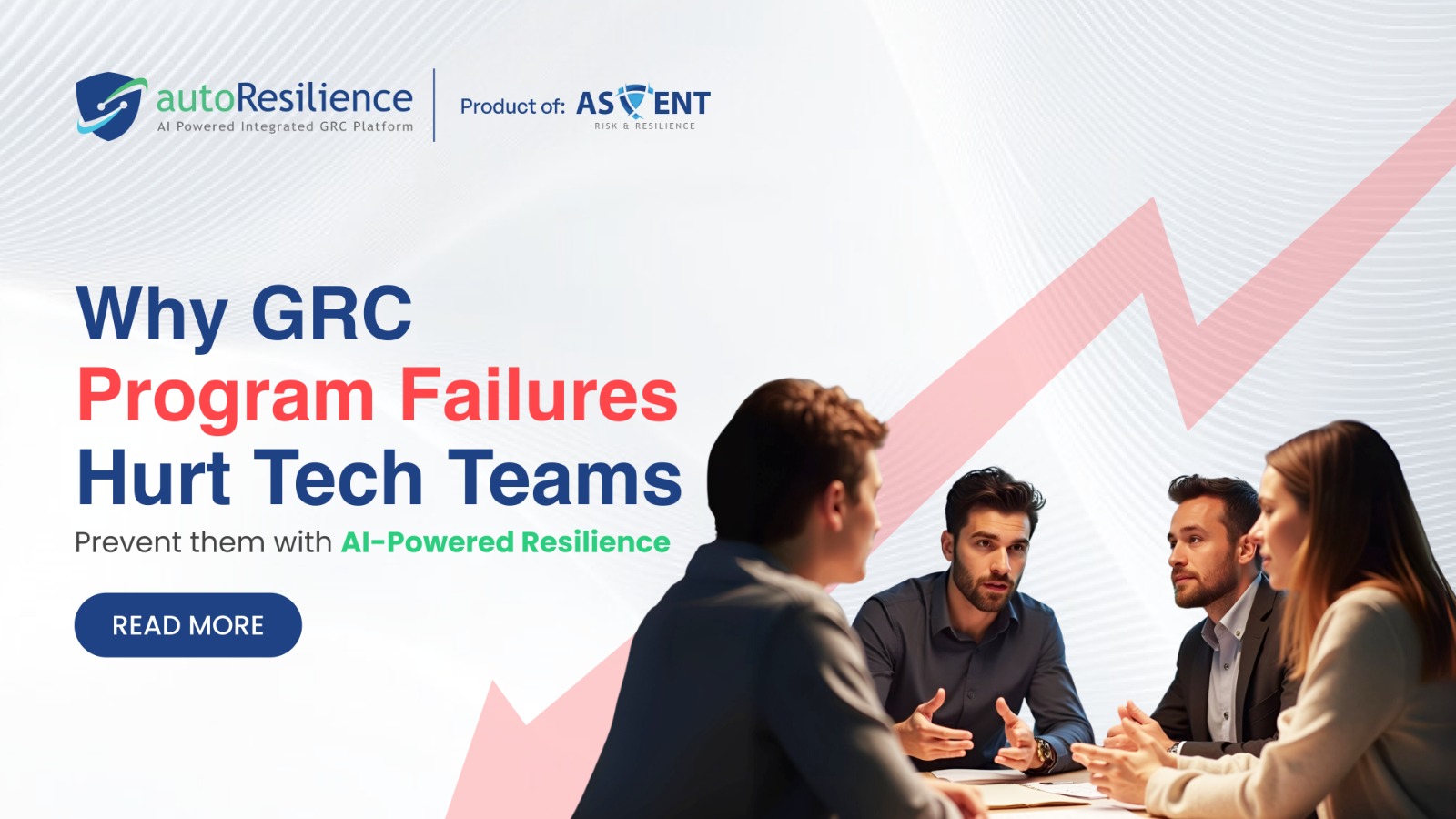
GRC Program Failures: 7 Reasons in Tech Teams
GRC program failures are one of the biggest blind spots for technology-driven organizations today. Despite investing heavily in compliance and risk frameworks, many enterprises only discove...

GRC program failures are one of the biggest blind spots for technology-driven organizations today. Despite investing heavily in compliance and risk frameworks, many enterprises only discove...
GRC program failures are one of the biggest blind spots for technology-driven organizations today. Despite investing heavily in compliance and risk frameworks, many enterprises only discover weaknesses in their governance when a major disruption or regulatory penalty occurs. These failures often stem from siloed tools, delayed risk intelligence, and a lack of real-time visibility into IT operations—leaving technology teams exposed until it’s too late.
At Ascent, we’ve seen how even mature organizations fall short in aligning GRC with technology operations. Here are seven common reasons why GRC programs fail to govern technology teams until it’s too late—and how you can change course before disaster strikes.
Legacy GRC programs often rely on separate tools for risk, compliance, IT governance, and business continuity. This siloed approach makes it nearly impossible to get a single view of risk exposure. Technology teams continue operating in isolation, while critical threats remain invisible until they escalate.
Solution: Adopt an AI-powered integrated GRC platform that unifies risk, compliance, and resilience data. Platforms like AutoResilience offer 350+ ecosystem integrations and real-time dashboards that eliminate blind spots.
Cloud adoption, DevOps, and third-party SaaS providers expand the digital footprint—but many GRC frameworks still operate at the speed of quarterly reviews. By the time a risk is flagged, attackers or regulators may already be ahead.
Solution: Implement predictive AI-driven risk analysis that evolves with your IT landscape. AutoResilience uses dynamic risk modeling and digital twins to map dependencies across processes, systems, and vendors.
Too often, GRC is seen as a compliance necessity rather than a business enabler. Technology teams focus on passing audits instead of building resilience. This mindset breeds complacency, leaving gaps in incident response and continuity planning.
Solution: Shift from compliance-first to resilience-first governance. With AutoResilience’s automated workflows and real-time compliance dashboards, organizations not only stay audit-ready but also strengthen resilience proactively.
Most GRC programs run on static risk registers. By the time reports reach leadership, the threat landscape has already changed. Technology teams are left reacting instead of preventing.
Solution: Move to real-time, AI-powered risk intelligence. AutoResilience’s predictive engines continuously scan for emerging threats, offering scenario-based playbooks that adapt as risks evolve.
From vendor risk assessments to business impact analyses, manual data collection slows everything down and increases human error. In a cyber incident or IT outage, delays can cost millions per hour.
Solution: Automate repetitive and high-stakes tasks. AutoResilience reduces audit prep time by 45% and impact assessment cycles by 60% through intelligent workflows.
When technology risks are buried in spreadsheets and departmental reports, the board often underestimates their severity. This leads to underfunded GRC initiatives and reactive firefighting when incidents strike.
Solution: Provide executives with real-time, configurable dashboards. AutoResilience ensures C-level stakeholders see actionable insights, not outdated summaries—enabling risk-aware decisions.
Technology resilience isn’t just a platform—it’s a mindset. Many organizations fail to train IT teams, leaving them unsure of their role during crises. Without a resilience-first culture, even the best GRC tools can fall short.
Solution: Integrate training modules, crisis simulations, and role-based access controls to build accountability. AutoResilience offers embedded collaboration tools that help organizations instill a resilience-first culture.
GRC should not be an afterthought when it comes to technology teams. With regulatory penalties averaging $14.83M annually per company for non-compliance, the cost of inaction is too high.
AutoResilience empowers technology and risk leaders to move from fragmented compliance to proactive resilience. By unifying governance across IT and business functions, you can detect risks earlier, respond faster, and recover smarter.
Ready to make your GRC program future-proof?